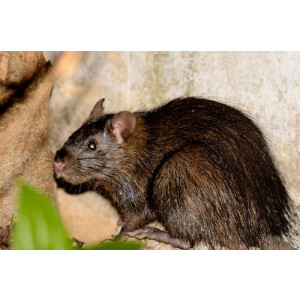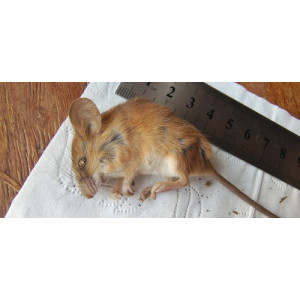House Mouse Did you see this animal?
Scientific Name : Mus musculus
Family : Muridae
Order : Rodentis
Class : Mammalia
Phylum : Chordata
Habitat : Shrubland, Grassland, Wetlands (inland), Marine Coastal/Supratidal
Description : Adult house mice typically measure about 7.5-10 cm in length, with a tail that can add another 5-10 cm.
They usually weigh between 10 and 30 grams.
House mice have small, pointed faces, large ears, and long, thin tails. They have soft fur that is usually light brown or gray in color.
They are found worldwide and are commonly found in human-made structures such as homes, buildings, and farms. They are also found in fields and forests.
House mice are omnivores and eat a variety of foods, including seeds, grains, fruits, insects, and small animals.
They are social animals and usually live in groups. They are primarily nocturnal and can be active year-round.
House mice breed year-round, with females giving birth to litters of 3-14 young after a gestation period of about 19-21 days.
In the wild, house mice typically live for about 1-2 years, but can live longer in captivity.
House mice are important laboratory animals for medical research and have been used in countless scientific studies. They can also be pests, causing damage to buildings and spreading disease.
They usually weigh between 10 and 30 grams.
House mice have small, pointed faces, large ears, and long, thin tails. They have soft fur that is usually light brown or gray in color.
They are found worldwide and are commonly found in human-made structures such as homes, buildings, and farms. They are also found in fields and forests.
House mice are omnivores and eat a variety of foods, including seeds, grains, fruits, insects, and small animals.
They are social animals and usually live in groups. They are primarily nocturnal and can be active year-round.
House mice breed year-round, with females giving birth to litters of 3-14 young after a gestation period of about 19-21 days.
In the wild, house mice typically live for about 1-2 years, but can live longer in captivity.
House mice are important laboratory animals for medical research and have been used in countless scientific studies. They can also be pests, causing damage to buildings and spreading disease.
Distribution in Bangladesh
References:
description written by:Asad U. Tanvir,Department of Zoology,Jagannath University,Dhaka; reviewed by:Muntasir Akash,Department of Zoology,University of Dhaka;Taxonomic Checklist:Red List of Bangladesh Volume 2: Mammals, 2015, IUCN; information sources:wikipedia,iucnredlist.org; photo credit:Davide(www.inaturalist.org/people/Davide), photo copyright: iNaturalist.more information please contact with us.
description written by:Asad U. Tanvir,Department of Zoology,Jagannath University,Dhaka; reviewed by:Muntasir Akash,Department of Zoology,University of Dhaka;Taxonomic Checklist:Red List of Bangladesh Volume 2: Mammals, 2015, IUCN; information sources:wikipedia,iucnredlist.org; photo credit:Davide(www.inaturalist.org/people/Davide), photo copyright: iNaturalist.more information please contact with us.







































